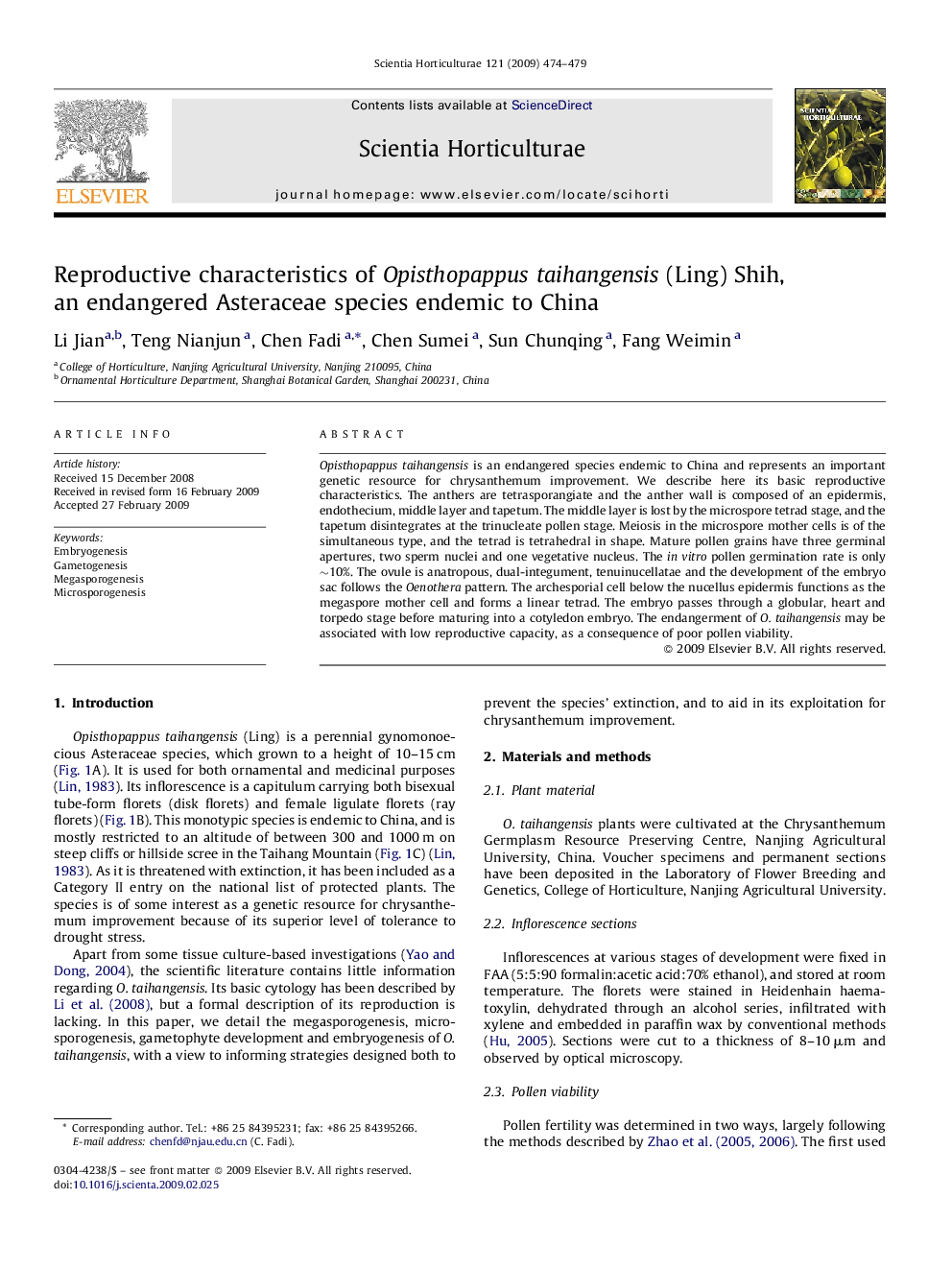| Article ID | Journal | Published Year | Pages | File Type |
|---|---|---|---|---|
| 4568361 | Scientia Horticulturae | 2009 | 6 Pages |
Abstract
Opisthopappus taihangensis is an endangered species endemic to China and represents an important genetic resource for chrysanthemum improvement. We describe here its basic reproductive characteristics. The anthers are tetrasporangiate and the anther wall is composed of an epidermis, endothecium, middle layer and tapetum. The middle layer is lost by the microspore tetrad stage, and the tapetum disintegrates at the trinucleate pollen stage. Meiosis in the microspore mother cells is of the simultaneous type, and the tetrad is tetrahedral in shape. Mature pollen grains have three germinal apertures, two sperm nuclei and one vegetative nucleus. The in vitro pollen germination rate is only â¼10%. The ovule is anatropous, dual-integument, tenuinucellatae and the development of the embryo sac follows the Oenothera pattern. The archesporial cell below the nucellus epidermis functions as the megaspore mother cell and forms a linear tetrad. The embryo passes through a globular, heart and torpedo stage before maturing into a cotyledon embryo. The endangerment of O. taihangensis may be associated with low reproductive capacity, as a consequence of poor pollen viability.
Related Topics
Life Sciences
Agricultural and Biological Sciences
Horticulture
Authors
Li Jian, Teng Nianjun, Chen Fadi, Chen Sumei, Sun Chunqing, Fang Weimin,
